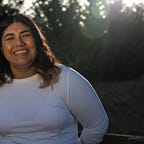There, There by Tommy Orange — A Response
Finding your sense of self is a lifelong journey. Who you were a few years ago is different from who you will be in five or ten years. For people, more specifically native people, the loss of identity lingers throughout their lifetime because the rest of the world is trying to suppress who they once were, who they are now, and who they could be in the future. The native people that have been introduced in the book thus far are lost within society trying to find out what being native means. Some of them like Jacquie have given in to alcohol and perpetuated the stereotype that native people are alcoholics. Others like Edwin are too lazy and unable to provide for himself and depend on outside help from his mother to continue to live. Both characters that are mentioned as well as the rest in part one cannot understand how they fit in with their Indianness and society as a whole. Their search for meaning in life is contingent with their ability to find themselves within the native Indian scope which is ever-changing as modern times take over and the ancient life is left behind.
There isn’t one way to be Indian. Native identity is fluid throughout the second half of the book. Native people used stories to explain themselves, their lives, and the world at large. Such stories whether they were mythical or not created a community in which one could find solace. Dene Oxendene sets out on a project semi-inherited by his uncle to bring together different native people in Oakland. His willingness to create a project based on native peoples’ stories can give meaning to other native people so that they don’t feel alone so they can be part of the native community. Dene wants to keep these stories as true as they can be. He is willing to “let them write, every kind of story [so he] can collect” (Orange, 39) them, Dene wants “[native people] to tell their stories with no one there, with no direction or manipulation” (Orange, 39) as their stories are important and are the fabric of what makes them native even if they do not know it themselves. For example, Opals mother wants them to always tell their stories which shows the importance of them cultivating native identity. This was how they would be able “to understand where [they] came from, what happened to [their] people, and how [they] could honor them by living right, by telling [their] stories” (Orange, 57). Which gives me the impression that these stories are what sets native people apart from the rest.
Given that all the stories so far are of people who cannot understand or embrace their native Indian culture, I believe that identifying with it is more complex than what outsiders make it. Each of the characters know they are Indian but cannot grasp what that entails. Identity is therefore more complex than saying you are one thing and embracing what that is. You can put on the regalia like Orvil does but when he looks in the mirror it seems off, it’s unknown. Thankfully each of the characters are interconnected in one way or another by the stories that are being told.
